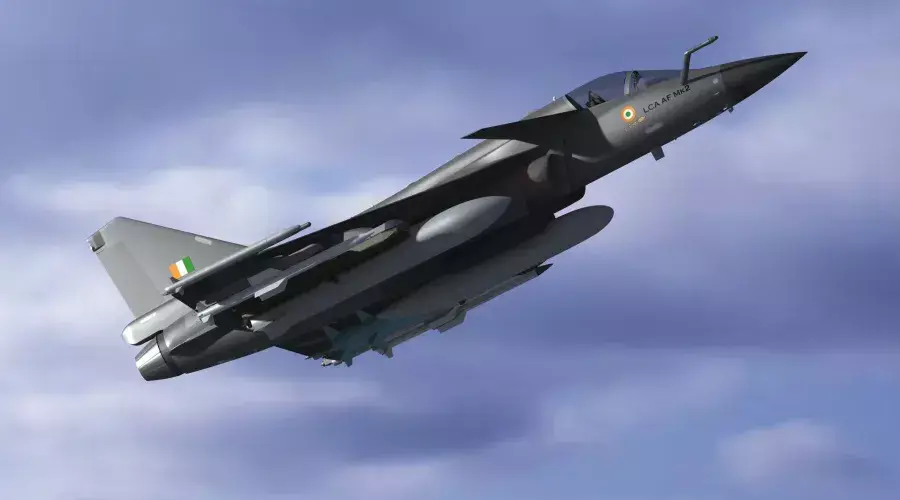
ADA Develops Larger Drop Tanks for Tejas Mk2, Extending Range
The Indian military has taken a significant step forward in enhancing the capabilities of its Tejas Mk2 fighter jet. The Aeronautical Development Agency (ADA) has begun developing two new external fuel drop tanks, with capacities of 1700 liters and 1300 liters, respectively. These tanks will be attachable to the wings and fuselage of the Tejas Mk2, significantly boosting its operational range and mission flexibility.
The addition of these jettisonable tanks will add a total of 4700 liters of fuel capacity to the Tejas Mk2, a substantial increase that will enhance its combat capabilities. This development is expected to have a significant impact on the Indian Air Force’s (IAF) ability to conduct longer-range missions and deploy its aircraft in a wider range of scenarios.
The Tejas Mk2 is a multirole fighter jet designed to perform a variety of tasks, including air-to-air combat, air-to-ground strikes, and reconnaissance missions. Its range and endurance are critical factors in determining its effectiveness in these roles. The new drop tanks will allow the Tejas Mk2 to stay airborne for longer periods, giving it more time to complete its missions and respond to emerging threats.
The development of these drop tanks is a testament to the ADA’s commitment to continuously improving the capabilities of the Tejas Mk2. The agency has been working tirelessly to address the limitations of the earlier Tejas variants, and the introduction of larger drop tanks is a significant step forward in this effort.
The 1700-liter drop tank is expected to be used for longer-range missions, while the 1300-liter tank will be used for shorter-range operations. Both tanks will be designed to be jettisoned in flight, allowing the pilot to quickly release the tank and conserve fuel during critical phases of the mission.
The development of these drop tanks is also expected to have a positive impact on the Indian defense industry. The project will create new opportunities for Indian companies to participate in the development and production of advanced military equipment, and will help to build the country’s capabilities in areas such as aircraft design, manufacturing, and testing.
The introduction of larger drop tanks will also have implications for the Indian Air Force’s operational doctrine and tactics. The ability to conduct longer-range missions will give the IAF more flexibility in terms of how it deploys its aircraft and how it responds to emerging threats. This could include the use of Tejas Mk2 aircraft for longer-range reconnaissance missions, or for supporting ground forces in more distant theaters.
In addition to the benefits it will bring to the Indian Air Force, the development of these drop tanks will also have strategic implications for the country. The ability to deploy combat aircraft over longer ranges will give India greater flexibility in terms of how it conducts its foreign policy and how it responds to security threats. This could include the use of Indian combat aircraft to support peacekeeping missions or to deter aggression in neighboring regions.
In conclusion, the development of 1700-liter and 1300-liter drop tanks for the Tejas Mk2 is a significant step forward for the Indian military. The tanks will significantly boost the operational range and mission flexibility of the aircraft, giving the Indian Air Force greater capabilities and more flexibility in terms of how it conducts its operations.
The project is a testament to the ADA’s commitment to continuously improving the capabilities of the Tejas Mk2, and will have a positive impact on the Indian defense industry and the country’s overall security posture. As the project moves forward, it will be important for the Indian government and the defense industry to continue to work together to ensure that the Tejas Mk2 is equipped with the capabilities it needs to meet the challenges of the 21st century.
Source:






